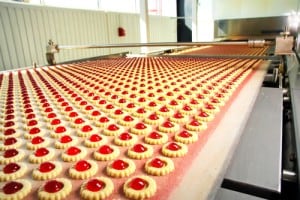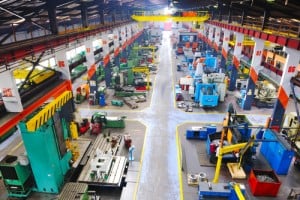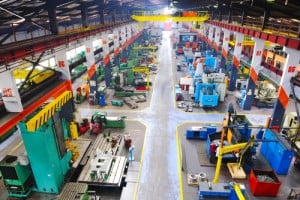How to Define Manufacturing Traceability ??? Part 2
In the last post, I talked about manufacturing traceability and supply chain traceability and hopefully made the case that they’re some big differences between the two. And, even if I didn’t convince you, I hope I at least convinced you to think about it some more and think about what manufacturing traceability really means. So, it’s time to get into it a little more.

Most people that have thought about manufacturing traceability for awhile understand that one of the most fundamental aspects of manufacturing is the production and consumption of materials. That’s really what manufacturing is all about.
You take a bunch of materials and you combine them, or do whatever you need to do to them, and you produce your product. So, one of the most fundamental aspects of manufacturing traceability is this notion of material traceability.
And, that’s a pretty common approach to getting started with manufacturing traceability. You start with material traceability or material genealogy. It could be called different things such as a lot tree, a genealogy tree, a genealogy map, and so on.
But the idea is all the same. You map the materials and the lots that go in and the materials and the lots that go out and you do that from the shipping dock to the receiving dock. In the end, you can trace any material from one end of the plant to the other.
If you are interested in a specific material, you can look at everywhere that material was used and every product that material went into. If you are interested in a specific product, you can tell all the materials that went into the product. And, for most manufacturing operations, there’s all kinds of intermediate materials (WIP) as well and the lot genealogy shows where they all came from and where they all went.
So, the material genealogy tree is a very powerful solution for most manufacturing plants. It gives you complete traceability of all the materials inside the manufacturing plant. By the way, it’s usually called a tree because of all the branches as the materials are used in multiple places and then those materials are used in multiple places and so on and so on.
And, this genealogy tree can usually be automated. There’s lots of good software solutions out there and combining those with automatic data collection, barcode labels and scanners, and even real cool stuff like RFID means that making all this work is fairly straight forward.
Now, the other thing to think about here is the link between the genealogy tree and the supply chain traceability. If you have all the supply chain traceability on the inbound materials, all the material traceability inside the manufacturing plant, and all the supply chain traceability on the outbound products, you have complete material traceability. That’s a lot of work but it’s a pretty cool capability that is more than well worth the effort.
So, when it comes to manufacturing traceability, this solution of a genealogy tree for material traceability is a great start. But, and here’s the thing I want you to think about, it’s only a great start.
Because even if you have complete material traceability throughout the manufacturing plant, that’s not nearly all that goes on in manufacturing. For real manufacturing traceability you need a lot more than the material traceability. You need all the traceability information on the manufacturing processes, on the manufacturing equipment, on the manufacturing labor, and bunches and bunches of other stuff.
Getting all the information on the materials is great but it’s only one part of the bigger picture that you need for complete manufacturing traceability. So, think about all this. Think about everything you need for manufacturing traceability. We’ll get into more of the details of manufacturing traceability in a future post. In the meantime, let me know what you think. Good luck!



